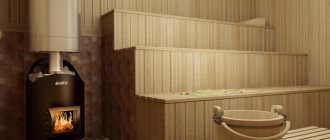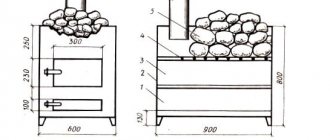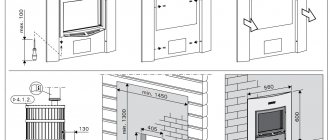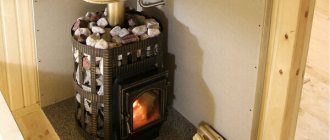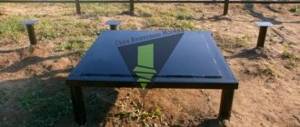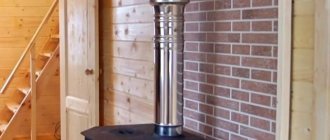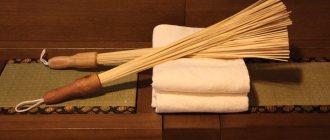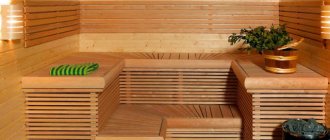For a city dweller, inexperienced with rural experience, who spends most of his adult life in an apartment in a multi-storey building, heating a bathhouse is not easy. But this is at first, due to lack of experience and practical skills. If you are new to the bath business and you, a seasoned bath master, have been instructed to light the stove and warm up the bath thoroughly, be sure to read this article. It will definitely come in handy.
Fuel selection
When kindling, you can use firewood from different types of wood:
- Thuja, pine, spruce. They are inexpensive and burn out quickly. The main disadvantage of the fuel is the content of resins, which settle on the walls of the chimney and do not burn out.
- Birches. They flare up quickly, burn long and evenly. When burned, they release a pleasant fragrant aroma that fills the bathhouses. It is recommended to use fresh, dried wood.
- Duba. This breed has a high heat transfer rate. Prepared logs can be stored for a long time without loss of quality. Burns for a long time and heats evenly. The disadvantage is the high price.
- Acacias. High thermal conductivity. Provides uniform heating.
- Aspen, poplar, linden. They have low density and burn out quickly. Do not provide strong heat.
- Hornbeam. They have a high thermal conductivity. The flame is smokeless, the burning is long, even, the heat is strong.
A separate type of solid fuel that is gradually gaining popularity is pellets and briquettes. The first are granules that are made from sawdust by pressing. The latter are similar to bricks, made from sawdust of different sizes. The main advantage of these types of fuel is long burning and intense heat.
Let's give the country coal
The use of coal for heating a bathhouse is a very delicate, if not scrupulous, issue. On the one hand, coal, especially high-quality anthracite, is a very high-calorie fuel that maintains the temperature inside the coal cake for a long time. In addition, anthracite and semi-anthracite produce relatively few volatile substances during combustion; they form soot plugs in chimneys.
On the other hand, truly high-quality anthracite is not always available and is almost always not cheap. Ordinary gas coals are prone to the formation of flue gases saturated with solid soot particles, which radically pollute smoke exhaust systems.
And finally, the combustion of coal is associated with the formation of a large amount of ash, which requires disposal, and the combustion process itself is accompanied by the characteristic and unpleasant smell of coal tar. In general, coal cannot be classified as an environmentally friendly fuel and therefore, when solving the problem of what is the best way to heat a bathhouse, coal should be considered last.
The dilemma of how to properly heat a bathhouse with a metal stove with coal is in most cases solved in budget establishments that provide bathing services on a commercial basis. Due to their specificity, heating with wood, and of high quality, is quite a costly undertaking, sometimes eating up all the profit.
Preparing and cleaning furnace equipment
Before you start heating the stove, you need to prepare the combustion chamber. To do this you should:
- Use a scoop to clean the ash chamber. Remove soot and remaining ash from the grate.
- Prepare logs. They should be stored in a firewood rack, which can be placed in the dressing room.
- Carefully inspect the heater. Rinse it with water if there are no stones inside.
- Fill the boiler with water if there is not enough water.
- Attention should also be paid to the presence of traction. To do this, you need to open the damper on the chimney, the combustion chamber door, and the ash pan. Light a match or splinter and bring it to the door. If the flame rushes towards the combustion chamber, there is draft. If the flame does not move, you should check the chimney.
The last stage is preparing the ignition medium. More often, newsprint or birch bark is used. You can buy a special liquid composition for ignition.
It is prohibited to use gasoline for kindling.
Preparing the premises
Before heating the bathhouse, it is necessary to prepare the room. Put the walls and shelves in order, wash them, ventilate the rooms. Fresh air and a clean environment will create the best conditions for health procedures. The stones from the steam room should be rinsed in clean water and put back in the same order. The heating container must be rinsed thoroughly and filled with fresh water. The water in the tanks and pool is also renewed. In the dressing room, prepare clean towels, sheets, and other necessary accessories. Also take care of drinks in advance; these can be various herbal infusions, tea, kvass, or plain water. Drinking alcoholic beverages during procedures is strictly prohibited; this can have a detrimental effect on overall well-being.
Starting a fire
Before starting a fire, it is necessary to “seed” the grate. To do this, you need to cut the stumps into logs. Next, perform the following steps:
- Place two logs parallel to each other on the grate.
- Break the bark into pieces and place them between the logs.
- Place two more sticks on top parallel to each other, but in a different direction in relation to the first row.
Fire making process:
- Using regular or fireplace matches, set the paper or bark on fire.
- Wait 3 minutes for the flame to burn.
- Close the combustion chamber door.
After 5 minutes, a hum should appear, which indicates that the wood has started to burn. It is necessary to close the blower door, leaving a small gap.
Bulk instead of real ones.
Let me draw your attention once again to the fact that we are talking about dry firewood with a moisture content of no more than 20%. The calorific value of 1 kg of such firewood will be at least 4 kW. But if their humidity turns out to be increased, which most often happens, then their calorific value drops sharply. For example, 50% humidity will reduce the heating value of firewood by half. So the main disadvantage of wet firewood is not that it does not burn well, but that it produces little heat. And finally, about one more trick that firewood sellers most often resort to. Cubic meters are real, folded and bulk. You pay money for a real cubic meter, but, alas, a rare seller uses real cubic meters when calculating the volume. In the best case, you will get folded cubic meters, in the worst - bulk. So not only trust, but also verify!
Tossing
Manipulations are carried out if:
- the steam room did not warm up well;
- the logs burn too quickly;
- all the fuel from the previous fuel burnt out;
- burning slowed down.
The first firewood should be added 10 minutes after the seed starts burning. Fuel adding process:
- Open the combustion chamber door.
- Use a poker to smooth out the remaining logs.
- Place firewood on top. The ends of the logs should extend beyond the grate.
- Fill the combustion chamber to 2/3 of the total height.
In winter, the bathhouse is heated for about 6 hours, in summer - 3 hours. This time is enough to reach the required temperature and warm up the steam room. The duration of heating depends on the area of the room, the material of the building, the power of the furnace, etc.
At a hardware store you can buy a door for the combustion chamber made of heat-resistant glass. The products look attractive; through the transparent partition you can admire the flames and assess how busy the firebox is.
Features of maintaining the required temperature
To maintain the desired temperature, you need to constantly add firewood to the stove. They are usually added every half hour to an hour.
A signal that it’s time to add more firewood can be an extinguished flame and low-heating coals. The coals must be stirred to create sparks. Then add a new portion of firewood. If there are not many people steaming, there is no need to heat the steam room too much. The chimney damper should be left 30% open.
Heating a stove in a sauna correctly is not that difficult. The main thing is to perform all operations consistently and not neglect cleaning the oven.
How to determine that the steam room has warmed up?
To check you need:
- Heat for at least two hours.
- Enter the steam room, open the door, start the ventilation if it is forced. If it’s natural, turn the curtains.
- Take a small amount of water with a ladle and throw it onto the heated stones.
- If the water quickly evaporates with a hissing sound, the steam room is preparing for bath procedures.
After this, you need to throw another portion of water onto the stones, close the ventilation curtains, and close the door.
You also need to pay attention to the end of the combustion process. To complete the procedures correctly, you must:
- Carefully open the combustion chamber door. See what condition the firewood is in, whether it needs to burn out.
- Level the remaining logs and coals with a poker. Close the door.
After this, you can begin bathing procedures.
Recommendations:
- Firewood must be stacked so that there is a 5-10 mm gap between the individual elements. This is necessary for air circulation.
- Between the upper wall of the combustion chamber and the fuel you need to leave 20 cm of empty space.
- To save fuel, you can close the pipe valve, but this is dangerous because smoke can enter the bathhouse.
- During the combustion process, it is necessary to monitor the color of the flame. If it has a bluish-yellow tint on top, it means carbon monoxide has accumulated inside the firebox. At this moment, the valves must not be closed, as this may lead to a fire.
The optimal moisture content of firewood is 20%.
How long to heat the bathhouse?
In the cold season, the bathhouse will have to be heated for at least 5-6 hours, in the summer less - about 3-4 hours. As soon as the room warms up to the desired temperature, the kindling can be completed.
Now you should wait until the last firewood burns out completely. If there are still bluish tongues above the coals, it means there is carbon monoxide in the firebox. If there is no flame, then everything is in order, it’s time to close the firebox and vent.
Almost done! Now the bath needs to brew for a couple of hours, after which it is ready for procedures.
AQUAMASTER Ing wishes you easy steam and reminds you that in the company you can get advice and assistance with the construction, decoration, reconstruction, maintenance of baths and saunas.
How to light a stove with raw logs?
Kindling stages:
- Chop the raw logs into slivers.
- Place them together to form a cone.
- Place crumpled paper or shredded bark inside.
- Open the furnace vent to maximum.
- Light a torch and use it to light paper or bark.
- Open the blower door to maximum.
The stove needs to be melted with wood chips for 15 minutes. After this you can add small sticks. Logs are added when there are enough coals and the walls of the oven are warmed up. To speed up the kindling, it is recommended to use a liquid ignition composition.
To ensure that moisture leaves the wood faster, raw logs must first be sprinkled with salt. Wait 10–15 minutes, clean off the salt. After this, you can start lighting the stove.
If wood is stored outdoors, logs or hemp should be laid out in rows so that adjacent rows do not touch each other. They should be located under a canopy. The edges can be covered with thick plastic film to protect from slanting rain.
How to wash soot in a bath
After each bath procedure, it is necessary to clean the room from the soot layer. The use of the following products is not recommended:
- water;
- liquid or laundry soap;
- sponges;
- hard brushes;
- spray bottle.
These products can be used when the surface is completely free of soot.
It is mandatory to use personal protective equipment:
- robe;
- rubber gloves;
- headdress;
- glasses;
- gauze bandage or respirator.
There are two ways to clean a bathhouse from soot: with mechanical devices and cleaning with chemical compounds.
Mechanical devices. You can use a spatula or a sharp scraper. This type of cleaning will require a lot of time and effort. To make your work easier, experts recommend a grinding machine. Then remove the resulting dust with a clean cloth and soapy water.
Cleaning with chemical compounds. The easiest way, according to the instructions, is to use liquid chemical compounds. Simply spray the product onto the contaminated surface and wash off after a while. Such preparations contain alkali components that quickly remove soot from a wooden surface.
Important! Do not use abrasive cleaning products for cleaning.
You can use a chemical sponge. It is impregnated with special substances that quickly and safely remove soot and soot from wood.
After all cleaning work, rinse the surface with clean water and wipe dry.
Safety precautions
Safety regulations:
- Damaged ovens must not be used.
- It is necessary to regularly clean the chimney to prevent smoke from entering the bathhouse.
- It is prohibited to use chemicals or liquid fuel for kindling. Compositions for igniting stoves are allowed for use.
- Firewood cannot be stored or dried close to the walls of the stove.
- There should be a sheet of metal under the ash hole to protect the floor from coals falling out.
- Do not leave the oven door open during combustion.
- Bathrooms should have proper ventilation.
- After each fire, you need to clean out soot and ash from the combustion chamber and ash drawer.
- You cannot fill the firebox to the very top.
The following cannot be used to light stoves:
- painted boards;
- old clothes, rags;
- plastic products, rubber;
- rotten, rotten logs.
Garbage not only clogs the firebox and chimney faster, but also emits a pungent, unpleasant odor.
What kind of firewood is suitable for lighting a sauna stove?
The choice of firewood affects the speed and quality of kindling, as well as the budget for bathing procedures. Forget about:
- rotten logs - they produce a lot of ash, but burn poorly and provide little heat;
- old firewood - their combustion is accompanied by unpleasant odors;
- firewood impregnated with chemical compounds - these emit harmful substances.
Which wood do you prefer?
It is better to prefer firewood from hardwoods - oak, hornbeam, maple, ash. They are characterized by the greatest heat transfer. In this parameter, fruit trees are inferior to those mentioned, although they also burn well. Larch has even lower heat transfer, but is most often used for heating. This is due to the availability of such fuel.
It is not recommended to use firewood from pine needles. Pine and spruce produce relatively little heat, and they also release resin during combustion. The latter settle on stones and in the chimney.
In addition to heat transfer, you need to look at the moisture content of the wood. “Fresh” firewood is characterized by a humidity coefficient in the range of 35-50%. This is a lot - such logs burn poorly. The indicator should not exceed 20% - in this case the required effect is ensured.
Advice! Before purchasing or preparing firewood, calculate the costs and results.
A little more specifically about the characteristics of different tree species in the table:
| Tree species | Advantages and disadvantages of firewood |
| Aspen | Pros:
Minuses:
|
| Alder | Pros:
There are no cons. |
| Spruce | Pros:
Minuses:
|
| Oak | Pros:
Minus:
|
| Birch | Pros:
There are no downsides, except for slightly lower heat dissipation than some other options. |
Calorific values are shown in the illustrations.
